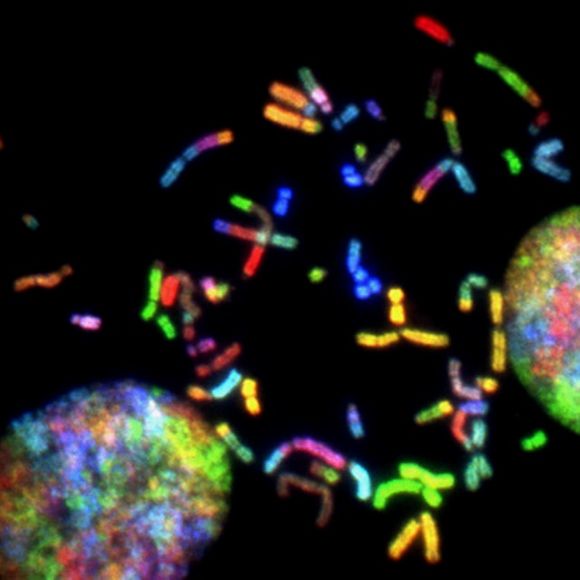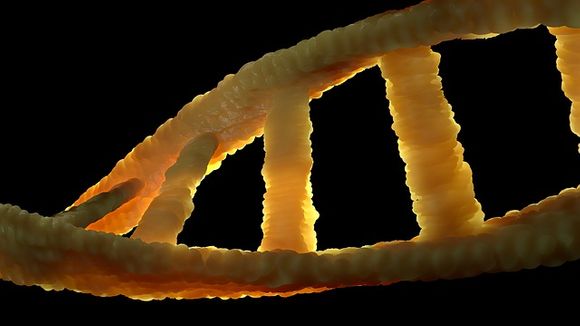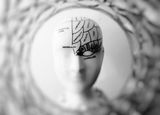Author: Silvia Marinova, PhD student in the Genomic Stability Laboratory at BAS
In the previous article [ref. 1], you learned about nucleic acids and that DNA is most important among them, since it is a carrier of our genetic code. We even determined its building blocks - nucleotides. But what exactly is meant by "code" and how it is decrypted, you will find out in this article. We will also look at what lies behind terms such as gene, gene expression, dominant and recessive disease and others.
Heredity - why children look like their parents
As early as the mid-19th century, the catholic monk Gregor Mendel suggested the existence of "hereditary factors" that determined the fact that certain characteristics were passed on by the parents to the offspring.
Through his experiments with the pea plant, Mendel was the first to determine the basic laws that determine the inheritance of traits in a generation.
Thus, a monk launches a whole new branch of science in the yard of his monastery, and not without justification today he is called the father of genetics. This is the science that explains why we look like our parents, and also why we differ.
At the time, however, the concept of the "hereditary factors" it defines was absolutely abstract. To this day, it has undergone tremendous development, and from the point of view of modern science, we already know exactly what these imaginary units of Mendel are - these are the genes.
We know that they are the basic unit of hereditary information and that their function is to store it. We can say that they encode information with instructions on how to look like and how to perform its vital functions.

How does this exactly happen? Let's first clarify some basics and terms in genetics:
- DNA is a carrier of the genetic information of all living organisms except certain viruses.
- Genes are found in certain sections of DNA called locus (more on nucleic acids can be read here) and contain information about the production of functional molecules, most commonly proteins.
- The totality of all genes for an individual is called the genome.
- DNA is found mainly in the nucleus of eukaryotic cells and is highly packaged in the form of structures called chromosomes.
- The number of chromosomes is specific to each species.
- The cells of humans contain 23 different chromosomes that come in pairs - one set from the mother and one from the father.
- Genes have different forms, which are called alleles. Since chromosomes come in pairs, we have two forms (alleles) of each gene. The combination of them determines our physical characteristics (such as eye color or skin), which we call phenotype.
- If an individual has two identical alleles of one gene, it is said that it is homozygous in the given gene.
- If an individual has two different alleles of one gene, it is said that they are heterozygous by the given gene.
- Alleles are dominant and recessive. A dominant allel is this form that has a defining influence and one copy of it is enough to manifest itself. Recessive allel is the one for which it is necessary to have two copies of it so as the gene to be manifested.
- Heredity is the sum of all biological processes that determine the transmission of certain traits (such as eye color and skin color) by the parents of their offspring.
- Sex chromosomes are involved in the determination of sex. In a person there are two sex chromosomes X and Y. Females have a XX set, and the male has XY. The two chromosomes are paired in diploid cells but are different morphologically. In contrast, the other 44 chromosomes have the same morphology in pairs. They are called autosomal chromosomes.

An example of autosomal dominant inheritance is the dominance of separated soft part of the ear above the adhesant one to the head. Let's name the dominant allel for a separated soft part with a capital "T", and the recessive with a little "t". Since T is the dominant allel, then one copy of it is enough to manifest phenotypicly its characteristic. This means that if we have combinations of TT or Tt, then our soft part of the ear will be separated. Only in the case of tt, ie. two recessive alleles, it will be adherent. It is important to note that the relationship between alleles is not always so simple. Also, some traits are determined by more than one gene.
There is a similar classification for the inheritance of some genetic diseases. For example, the disease may be autosomal dominant inherited, which means that a mutated gene from one parent is sufficient for us to develop the disease. Autosomal dominant inherited diseases are Huntington's disease, familial hypercholesterolemia and others. Diseases such as cystic fibrosis and Fanconi's anemia are transmitted autosomally. There are also sex-related diseases.
What is the hemistry of genes
Having become acquainted with the basic terms in genetics and gene as the functional unit of heredity, it is time to look at the basic molecular characteristics of genes as well as what it is genetic code and how it is "read".
We've already said, that DNA contains the genes of all living organisms except certain viruses that use RNA as a carrier of their genetic information. It is common to use the linguistic analogy to explain the flow of genetic information from a given gene to the corresponding protein (more on this here), since nucleic acids and proteins are polymers made up of a specific sequence of monomers that transmit certain information in this way, just as sequences of letters form words in a language.
In biology, nucleotides - which make up DNA - play the role of the "letters" of the genetic code. In this alphabet, there are only four - A, G, C and T, which come from the names of the four types of nucleotides - adenine, guanine, cytosine and thymine, respectively.
Typically, genes are long sequences in DNA with a specific nucleotide sequence. When the product of a gene is needed by the cell, then that part of the DNA is transcribed onto RNA through a process called transcription. The resulting information RNA reaches the cellular ribosome machines and is translated into another chemical language - that of proteins.
In other words, the processes of transcription and translation allow the genetic code to be "decoded" into a protein. In this way, the instructions written in it are followed. This is part of a process known to biologists as gene expression. [ref. 1]

So far so good - we have explained what is a genetic code. We also know how the instructions recorded in it are "read" and executed by the cells. But there is one more basic process that we need to mention to make the picture complete.
And you can probably guess that it is related to the transmission of our genetic material in the generation. This is possible thanks to replication. In essence, it represents the doubling of our entire genome and precedes any cell division in our body, so that the newly formed daughter cells receive the necessary amount of genetic material and life can continue.
Such division takes place in the precursors of the germ cells - sperm and eggs. This division is called meiosis and in it only 23 chromosomes remain in the germ cells, so that their number can be doubled during their fusion (during fertilization) and so we get one copy of the chromosomes from our mother and father. This ensures genetic diversity between individuals.
Unlike sex cells, those that make up the rest of our body (somatic cells) are divided by mitosis. In this process, the new cells that are formed have a complete set of chromosomes and are copies of the cell from which they originate.
Read more:
Epigenetics or how lifestyle governs our genes








